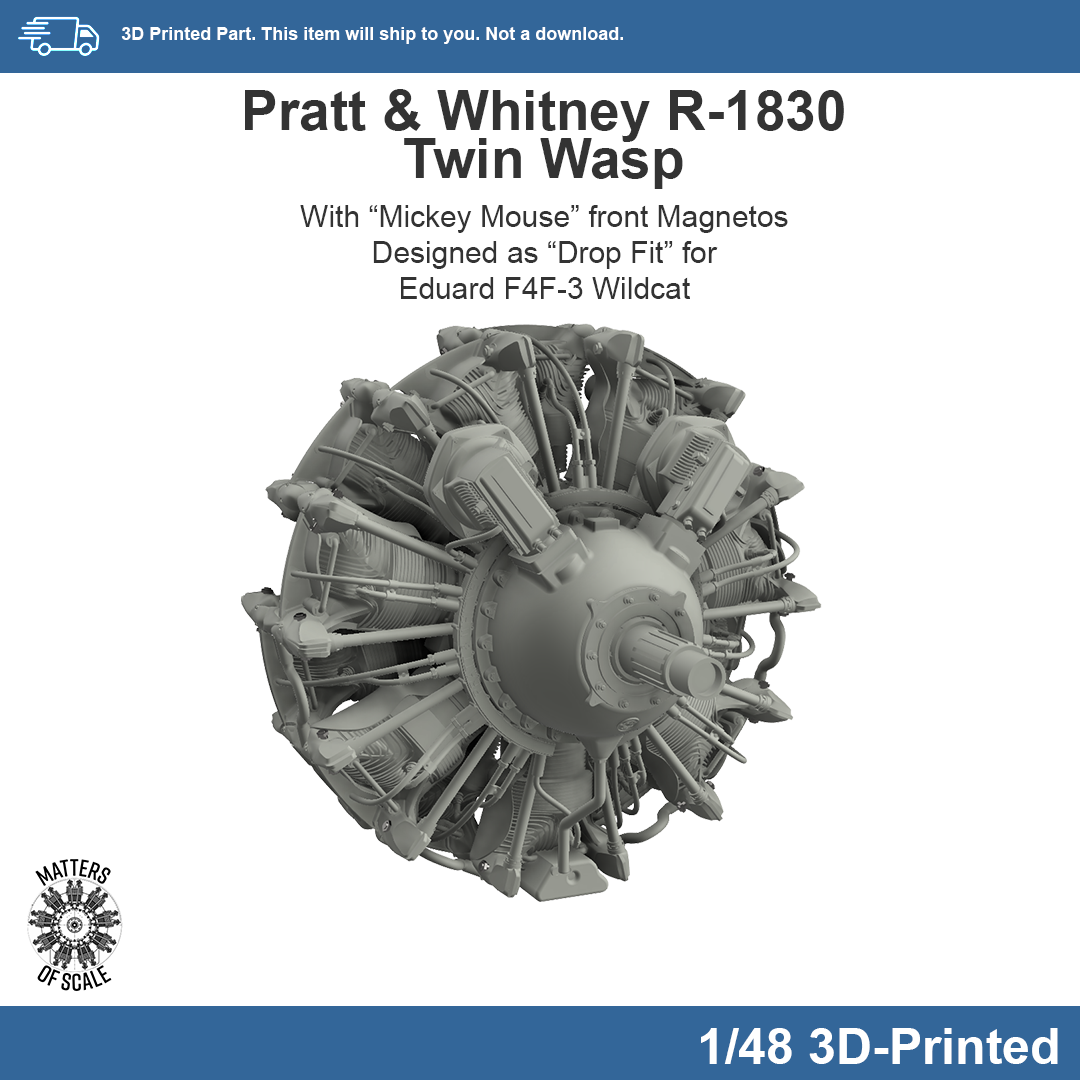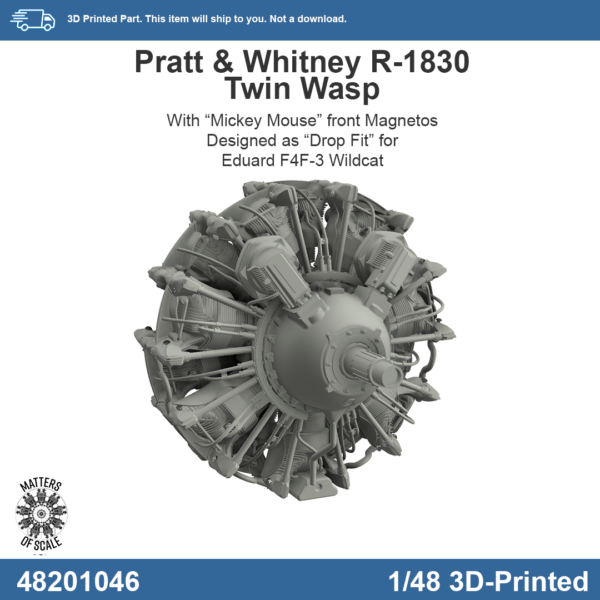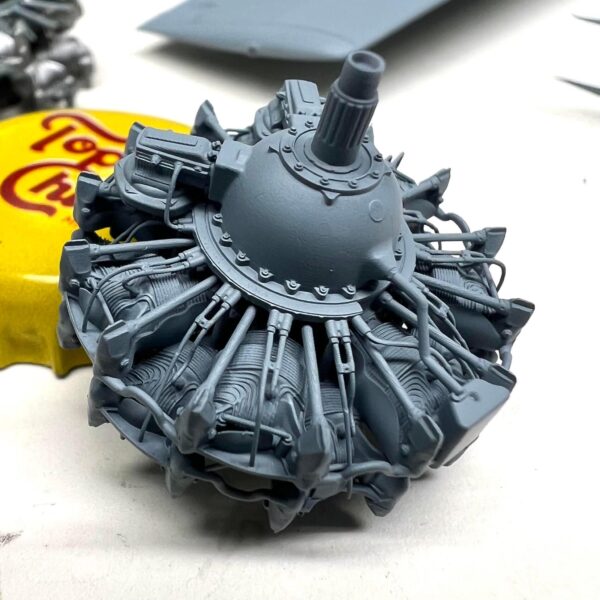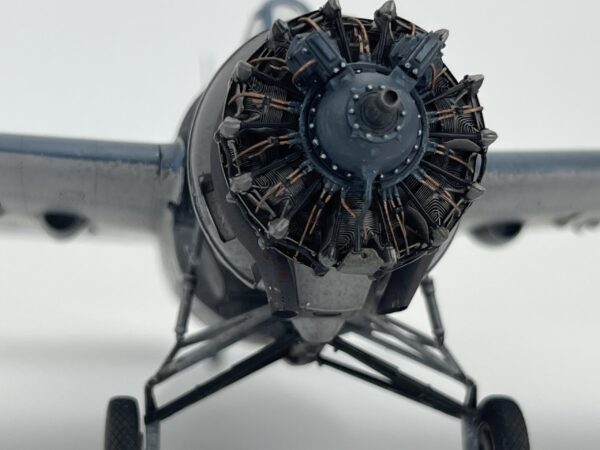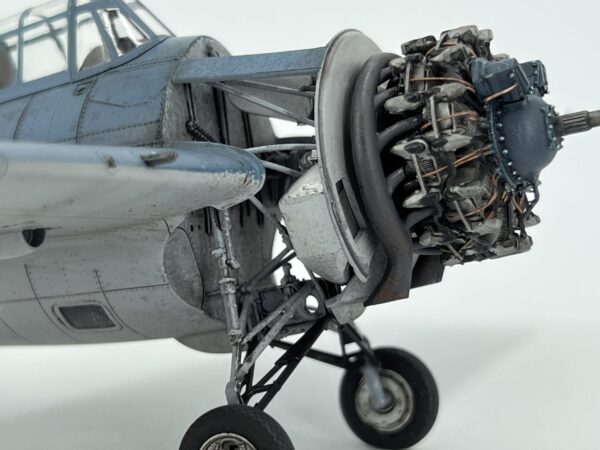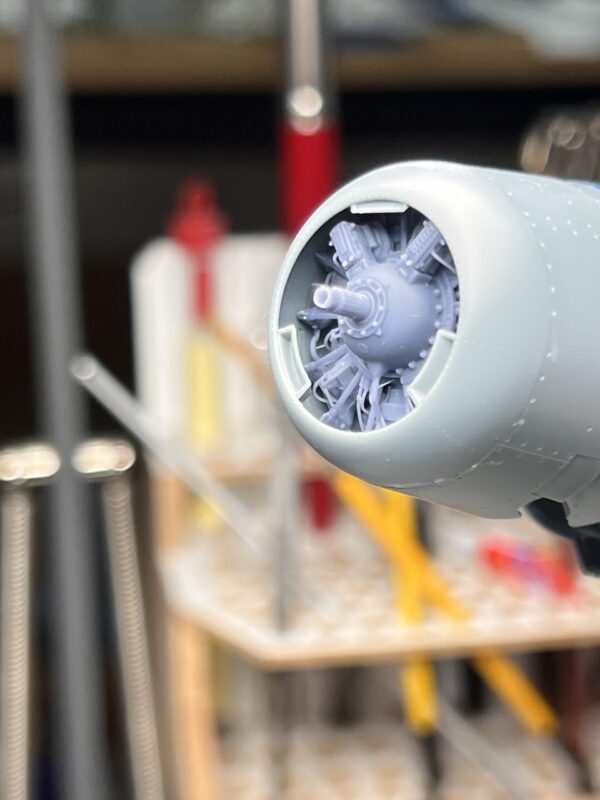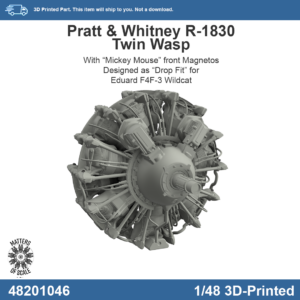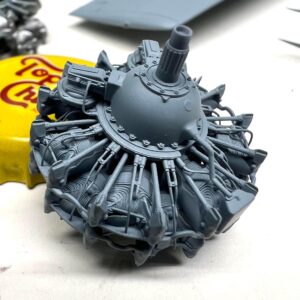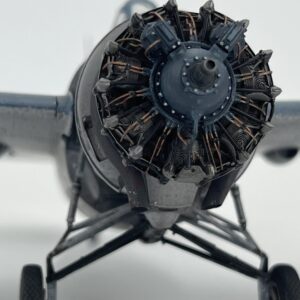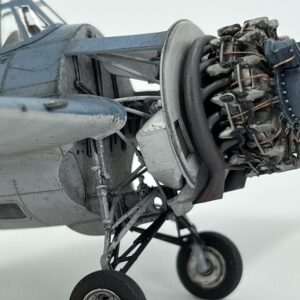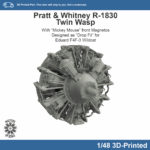Pratt & Whitney R-1830-86 Twin Wasp :: 3D Printed 1/48 for Eduard F4F-3
$18.95
3D printed Pratt & Whitney R-1830-86 radial engine designed specifically for the Eduard F4F-3 Wildcat (1/48 scale).
In stock
Description
This model represents the R-1830-86 Twin Wasp used on the Grumman F4F-3 Wildcat. The prominent "Mickey Mouse" Magnetos are accurately depicted. The model is designed as a drop fit with the proper mounting for the Eduard F4F-3 model kit, but may fit other kits.
Scale is 1/48
Historical Notes:
The Pratt & Whitney R-1830 Twin Wasp stands as the most prolifically produced aircraft engine in history. By the time production ceased, around 178,000 units of various Twin Wasp models had been manufactured. To meet demand, Pratt & Whitney extended production rights to Buick, Chevrolet, and Commonwealth Aircraft in Australia, as well as to Flygmotorbolaget in Sweden post-World War II.
The development of the Twin Wasp began in 1931 under the expertise of renowned Pratt & Whitney engineer Luke Hobbs. This twin-row radial engine featured 14 cylinders arranged in two rows of seven, all mounted on a forged aluminum crankcase. To reduce weight, the design incorporated significant use of magnesium, and careful attention was paid to the engine mounts to minimize vibration. Throughout the 1930s, the R-1830 was the largest engine being developed in the U.S. Advances in fuel quality, supercharger technology, and cooling methods helped boost its power output from 800 hp in the initial R-1830-1 model to 1,200 hp in the later -92 series. Notably, the R-1830-76 model became the first engine to employ two-stage supercharging, a feature developed specifically for the U.S. Navy's F4F-3 Wildcat.
Although the Twin Wasp powered fighters such as the Seversky P-35 and Curtiss P-36 Hawk, it gained prominence primarily as the engine of choice for multi-engine bombers and transport aircraft. Notable among these was the Consolidated B-24 Liberator/PB4Y-2 Privateer series, the most produced U.S. aircraft in history. It also powered the Douglas C-47 Skytrain and the PBY Catalina flying boat, both of which utilized a pair of R-1830-92 engines.
As Pratt & Whitney's inaugural twin-row design, the Twin Wasp displaced 1,830 cubic inches and could deliver up to 1,350 horsepower. It featured an innovative multilayered master rod bearing designed to handle increased stresses at higher power ratings. The engine's remarkable performance and reliability made it the preferred choice for powering a wide array of fighters, bombers, and transport aircraft, contributing to its mass production of 173,618 units during the urgency of World War II.
The R-1830 was used in the following aircraft:
- Bloch MB.176
- Boeing XB-15
- Budd RB Conestoga
- Burnelli CBY-3
- CAC Boomerang – Australian "emergency fighter"
- CAC Woomera
- Consolidated B-24 Liberator
- Consolidated PBY Catalina
- Consolidated PB2Y Coronado
- Consolidated PB4Y Privateer
- Curtiss P-36 Hawk
- DAP Beaufort – Australian-built variants of Bristol Beaufort
- Douglas C-47 Skytrain
- Douglas DC-3
- Douglas DB-7 – early variants only
- Douglas TBD Devastator
- FFVS J 22 – "emergency fighter"; built in-house by the Swedish Air Force
- Grumman F4F Wildcat
- I.Ae. 24 Calquin
- Laird-Turner Meteor LTR-14
- Lioré et Olivier LeO 453
- Lockheed Model 18 Lodestar
- Lisunov Li-3 – a Yugoslav version of the Lisunov Li-2
- Martin Maryland
- Martin M-130
- Republic P-43 Lancer
- Saab 17
- Saab 18
- Short Sunderland V
- Seversky P-35
- Vickers Wellington IV
- VL Myrsky – Finnish "emergency fighter"
- Vultee P-66 Vanguard
Additional information
| Scale | 1/48 |
|---|

